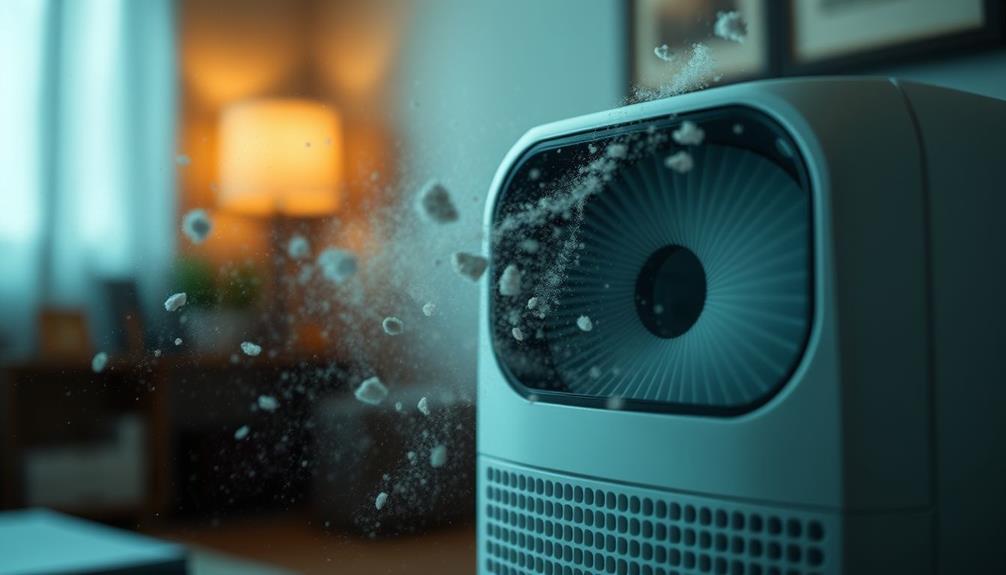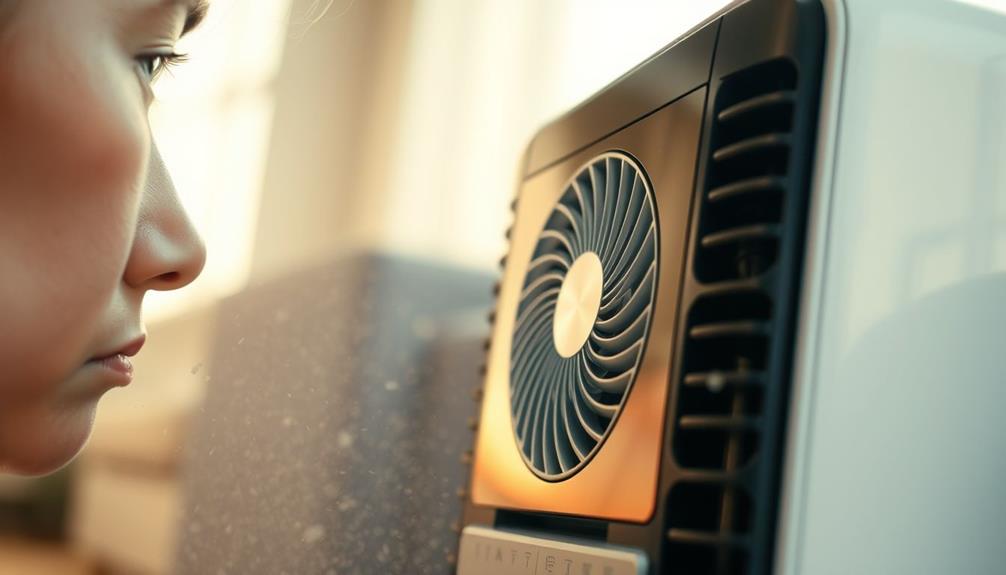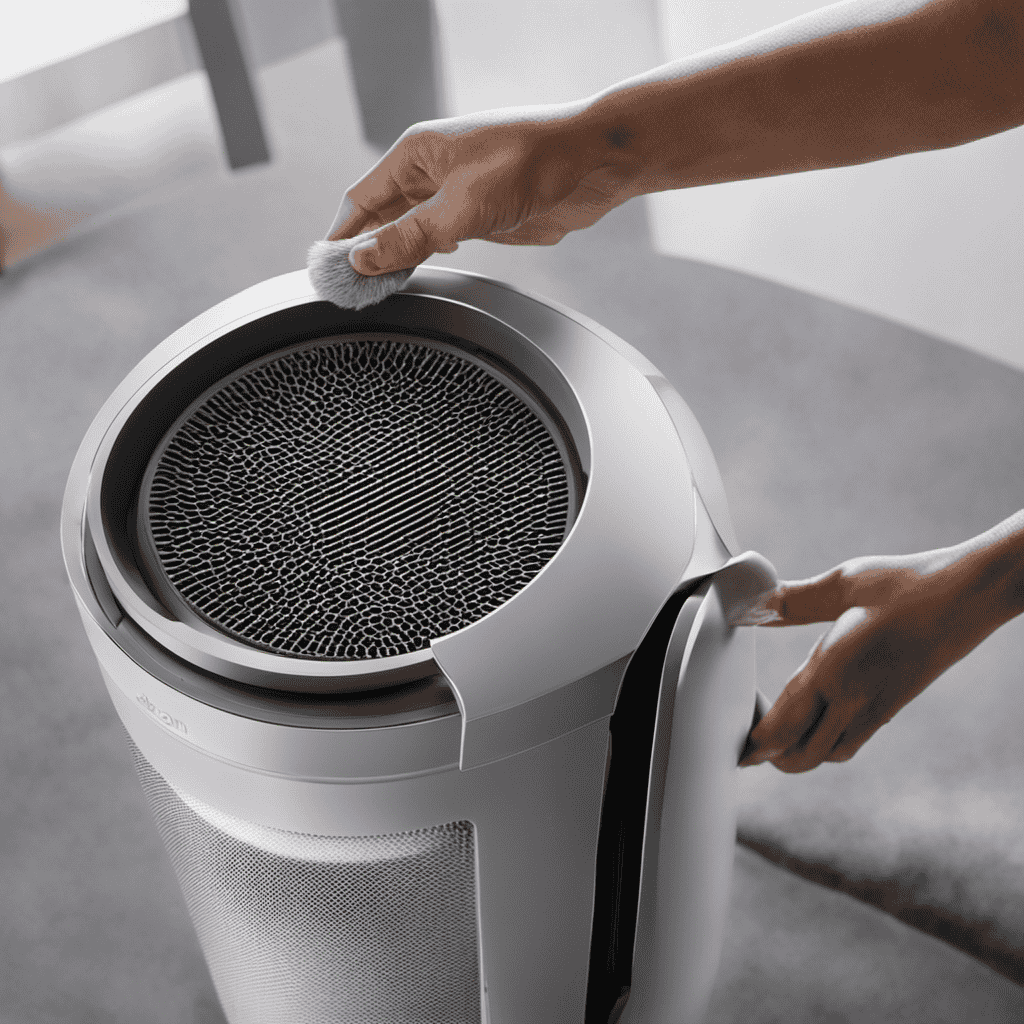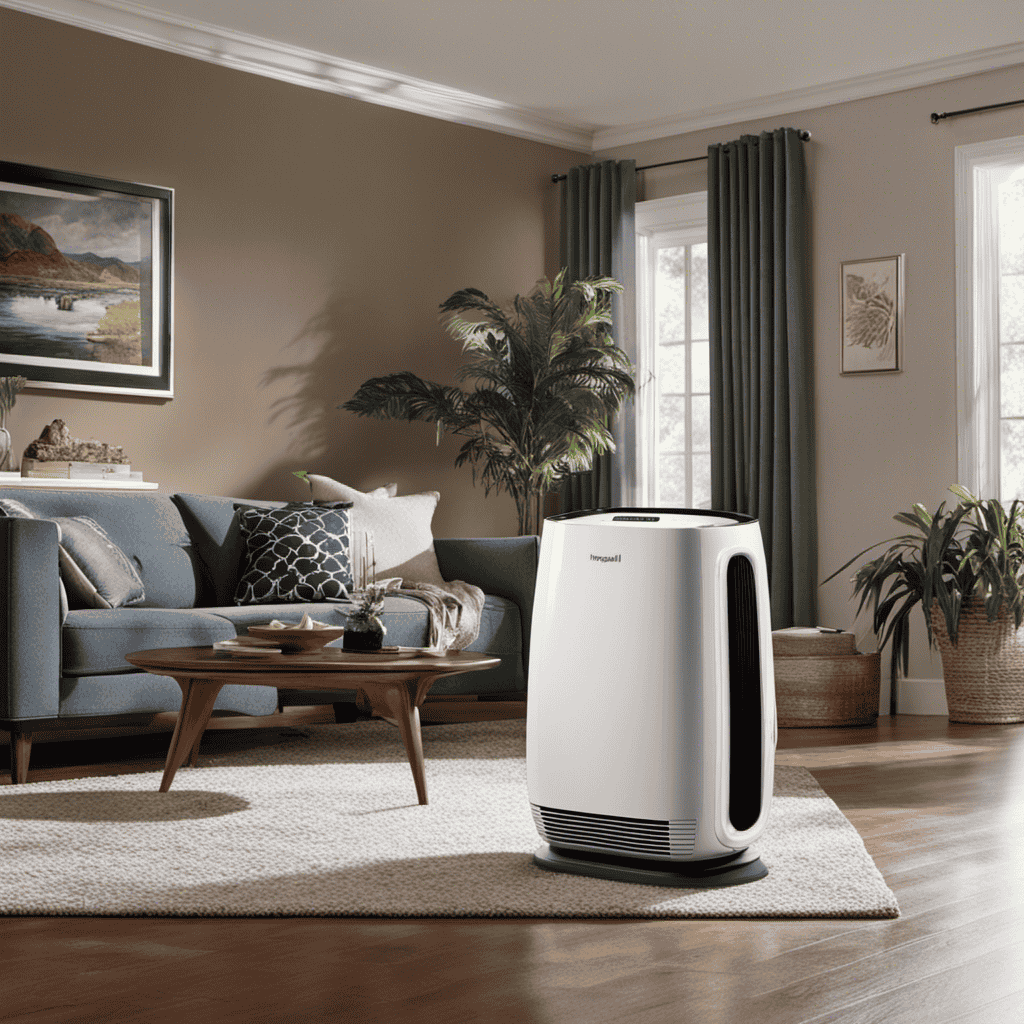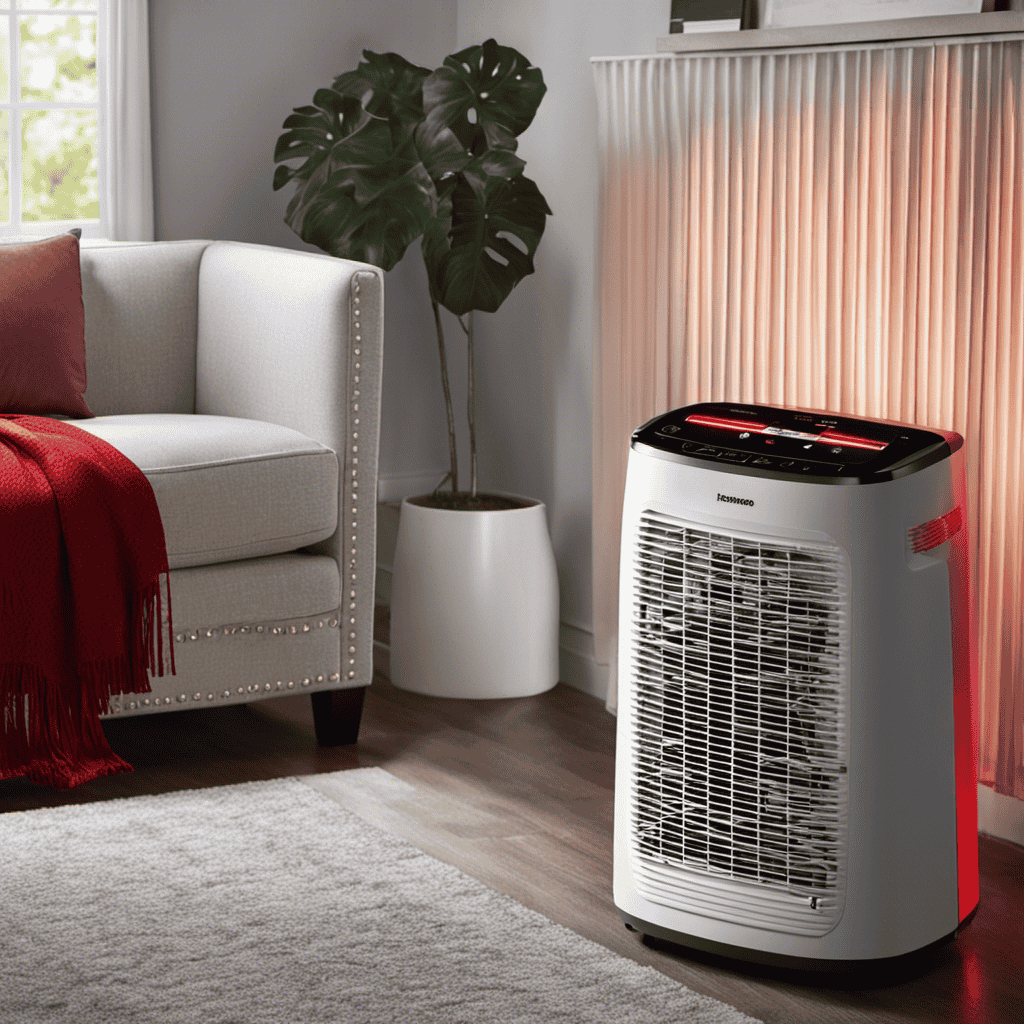To solve airflow problems in your air purifier, start by checking and replacing clogged filters every six months. Clean filters improve efficiency and air quality. Make certain there are no obstructions in the air intake or exhaust areas, as dust and debris can disrupt airflow. Position your purifier at least 15 cm away from walls for better circulation. If airflow remains weak, inspect the control functionality and power supply. Adjust fan speed settings if necessary. Keeping up with regular maintenance practices guarantees peak performance, and there's plenty more helpful tips on maintaining your air purifier effectively.
Key Takeaways
- Regularly clean or replace filters every six months to prevent clogging and maintain optimal airflow efficiency.
- Ensure there are no blockages in air intake or exhaust areas; inspect for dust and debris regularly.
- Remove packaging from new filters before installation and position them correctly for effective operation.
- Keep the air purifier at least 15 cm away from walls or objects to enhance airflow and reduce obstructions.
- Test the unit periodically for weak airflow, and address any power issues to avoid motor malfunctions.
Common Airflow Issues
When it comes to common airflow issues in air purifiers, clogged filters are often the main culprit. A dirty filter can considerably hinder airflow, making your air purifier less effective at cleaning the air in your home. Regular filter changes are vital for maintaining efficiency, as noted in general air purifier usage.
You might notice that the air intake isn't functioning as well as it should, which can lead to a noticeable drop in air quality.
Besides clogged filters, blockages in the air intake or exhaust can also disrupt proper airflow. It's important to inspect these areas regularly to verify there's no obstruction.
When installing new filters, make sure to remove any packaging; leaving it on can block air passage and compromise your purifier's performance.
Additionally, if you're using low fan speed settings, consider adjusting them to higher speeds for better airflow.
Finally, keeping your air purifier at least 15 cm away from walls and furniture can help maintain unobstructed airflow around the unit.
Importance of Filter Maintenance
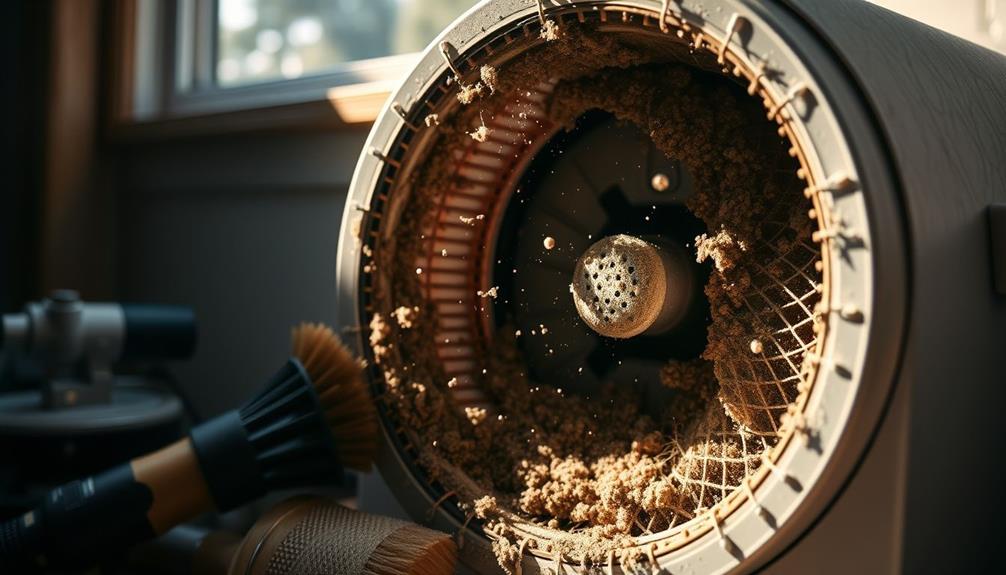
Maintaining your air purifier's filters is essential for keeping the air in your home clean and healthy. Clogged or dirty filters can greatly hinder airflow, reducing the purifier's effectiveness in trapping harmful particles like mold and pollen.
Regular maintenance is especially important as many appliances, like air purifiers, can suffer from performance issues due to neglected HVAC maintenance. If you want your air purifier to work properly, regular maintenance is a must.
Here are some key points to keep in mind:
- Clean or replace filters every six months to prevent dirt buildup.
- Verify filters are installed correctly, removing any packaging or plastic wrap.
- Use high-quality filters, like Nispira, for better particle capture.
- Neglecting maintenance can turn your filters into sources of indoor pollution.
Troubleshooting Power Supply Problems
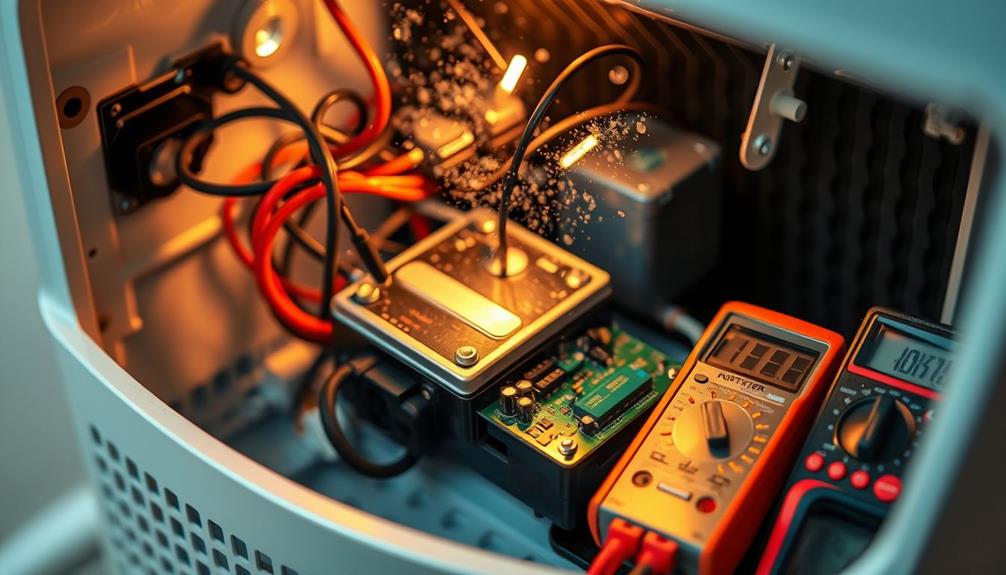
Power supply problems can be frustrating, especially when your air purifier suddenly stops working. To troubleshoot, start by inspecting the power cord for any visible damage. A damaged cord can prevent electricity from reaching the unit, hindering its operation.
Additionally, verifying that your home is equipped with adequate home security systems can help protect your appliances from power surges that may lead to such issues.
Next, check the power socket by plugging in another device to verify it's functional; a faulty power socket mightn't supply adequate electricity for your air purifier.
If the air purifier still won't turn on, make sure the power cord is securely connected to both the unit and the outlet. Sometimes, simply unplugging the unit for a few minutes and plugging it back in can reset the internal components, resolving minor power issues.
If these steps don't work and you continue to experience power supply problems, it might indicate a more serious issue. In that case, it's best to contact a professional or the manufacturer for support.
They can help determine if repairs or replacement parts are needed to get your air purifier working properly again. Remember, addressing power supply issues promptly can help maintain the efficiency of your air purifier.
Addressing Overheating Concerns
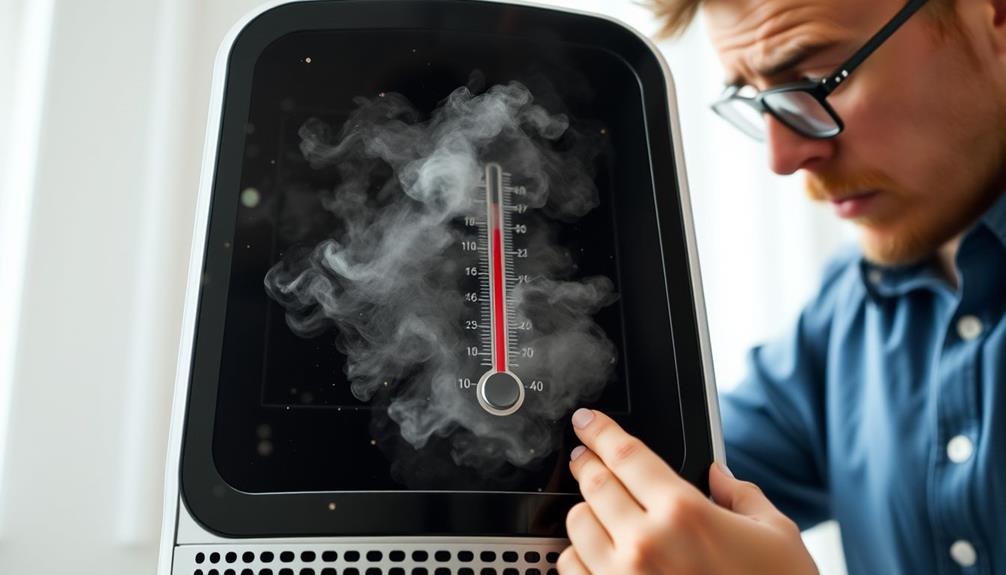
Overheating concerns in air purifiers can lead to significant problems if not addressed promptly. If your unit's filters are dirty or clogged, airflow gets restricted, forcing the purifier to work harder and increasing the risk of overheating. This can trigger internal safety mechanisms that shut the device down to prevent damage.
Similarly, ensuring that your home environment is free from factors that could affect your air purifier's efficiency, such as strong odors or certain plants, can contribute to effective operation. For example, understanding toxic ferns can help you maintain a safer space for your air quality.
To keep your air purifier running smoothly and avoid overheating, consider the following tips:
- Regularly check and clean your filters.
- Replace the filter as recommended by the manufacturer.
- Monitor for unusual noises or excessive heat during operation.
- Seek professional help if you notice any signs of overheating.
Ignoring these concerns can result in severe issues, including total failure of the air purifier. Regular maintenance and vigilance are key.
Inspecting Control Functionality

After verifying your air purifier stays cool and operates efficiently, it's time to focus on the control functionality. If your controls are unresponsive, it could indicate a malfunction.
Start by checking power cord connections and confirm the filter cover is properly placed. If everything looks good but the purifier isn't working, try unplugging the unit for a few minutes to reset the system. This simple step can often restore control functionality.
Implementing a methodical approach to troubleshooting, similar to best practices in software quality assurance, can be beneficial in resolving issues.
Additionally, make certain the power supply is stable; faulty sockets can impede responsiveness. Testing your sockets is essential in troubleshooting any control issues. Regularly testing the control buttons helps identify problems early, allowing you to address them before they impact air quality.
If you're still experiencing issues, consult the user manual for specific troubleshooting steps tailored to your model. Unique features or reset procedures could be the key to getting your air purifier back in action.
If all else fails, don't hesitate to reach out to the manufacturer for assistance. Keeping your air purifier functional guarantees you maintain proper air quality in your home.
Regular Maintenance Practices
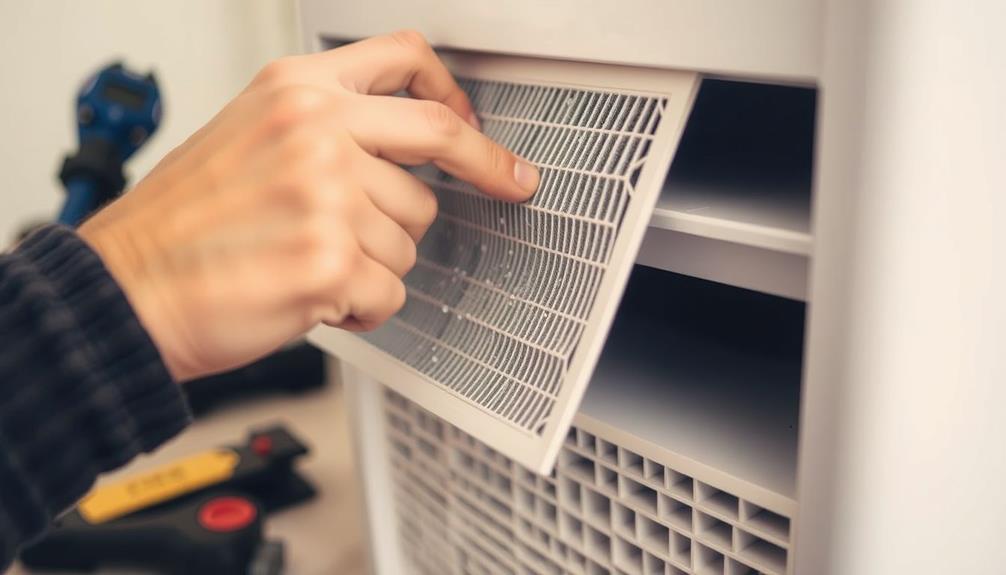
To keep your air purifier running efficiently, you need to stick to a regular maintenance schedule. This means cleaning or replacing filters every six months, checking power connections, and monitoring for any airflow obstructions.
Regular upkeep is vital, especially if you have pets or live in a dusty area, as these factors can greatly affect the performance of your purifier.
Additionally, understanding the essential items for a home cleaning kit can help you maintain a clean environment that supports your air purifier's effectiveness.
Filter Cleaning Schedule
Maintaining a regular filter cleaning schedule is vital for keeping your air purifier running efficiently. Clogged filters can greatly reduce air flow, making it important to clean or replace them every six months. By establishing a routine, you guarantee your device can work properly and effectively purify the air in your space.
Here are some tips for an effective filter cleaning schedule:
- Check filters every month: Look for signs of dirt or clogging.
- Clean filters as needed: If they're only slightly dirty, cleaning filters can often resolve minor blockages.
- Replace filters every six months: Severely clogged filters should be replaced to maintain peak performance.
- Remove filter packaging: Always take off any plastic wrap from new filters before installation to avoid airflow obstructions.
Don't forget to schedule professional maintenance at least biannually. This will guarantee all components, including filters, are functioning correctly and enhance the lifespan of your air purifier.
Keeping up with a filter cleaning schedule is a simple yet effective way to maintain clean air in your home.
Inspect Power Connections
Regularly inspecting power connections is essential for the effective operation of your air purifier. Start by checking the power cord connections to verify they're secure and free from damage. A faulty connection can prevent your air purifier's motor from functioning properly, leading to inefficiencies in air purification.
Just as businesses conduct background checks to verify safety and compliance, confirming your air purifier's power connections are intact can help prevent potential issues.
Next, periodically test the power socket for functionality. If the socket isn't supplying adequate electricity, it can disrupt your air purifier's performance. Remember, a malfunctioning motor often stems from power issues, so make sure to address any problems you find.
When inspecting or adjusting power connections, always use dry hands to avoid electric shocks. It's also a good practice to check the filter cover placement during maintenance. Improper installation can hinder airflow and reduce the efficiency of your air purifier.
To maintain peak performance, schedule routine maintenance checks at least twice a year. This will help you identify and resolve any power connection issues before they escalate.
Monitor Airflow Obstructions
Airflow obstructions can greatly hinder your air purifier's efficiency, so keeping an eye on potential blockages is crucial. Regular maintenance helps guarantee peak performance and air quality in your space.
Here are some key practices to monitor airflow obstructions:
- Inspect the air intake and exhaust areas: Regularly check for dust, debris, or blockages caused by walls or furniture. Maintaining a clean environment can enhance airflow, similar to how well-draining soil benefits plant health.
- Position your air purifier correctly: Make certain it's at least 15 cm away from walls or other objects to allow unrestricted airflow.
- Clean the fabric front panel: Periodically remove dust accumulation, which can lead to noise issues and reduced airflow efficiency.
- Replace filters as needed: Change filters every 6 months or sooner if they look dirty; clogged filters considerably restrict airflow and reduce purification capabilities.
Additionally, test the unit periodically. If you notice weak or inconsistent airflow, inspect for obstructions and perform necessary maintenance.
Conclusion
In tackling airflow problems in your air purifier, remember that a stitch in time saves nine. By regularly maintaining filters, troubleshooting power issues, and keeping an eye on overheating, you'll guarantee your purifier runs smoothly. Don't overlook the importance of checking control functions and practicing routine upkeep. Taking these steps not only enhances your air quality but also extends the life of your device. Breathe easy knowing you've got your air purifier in top shape!
